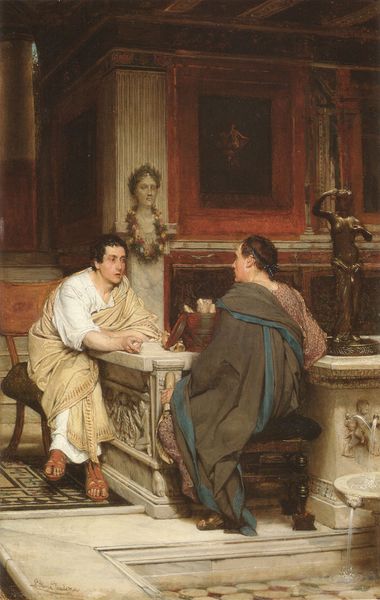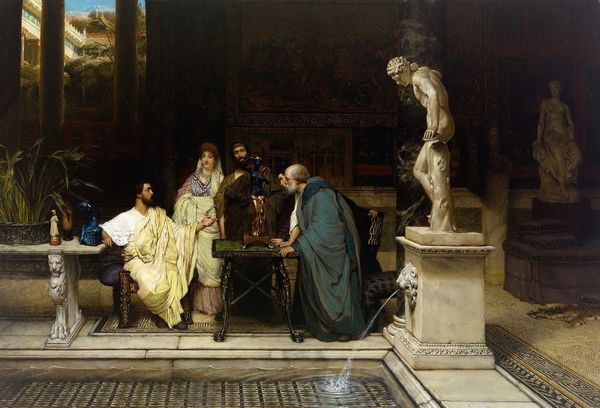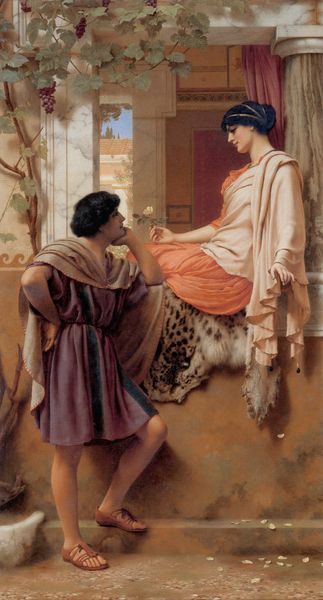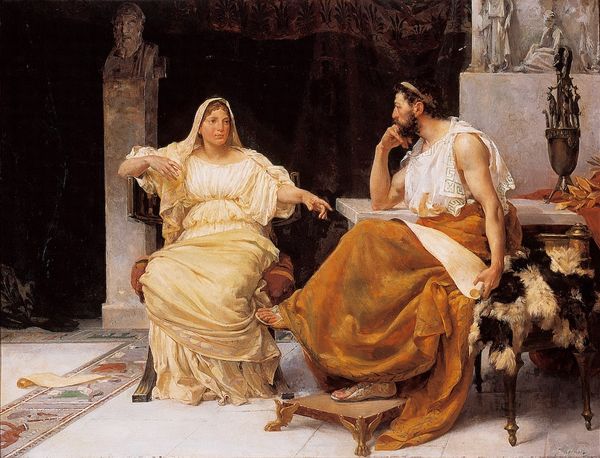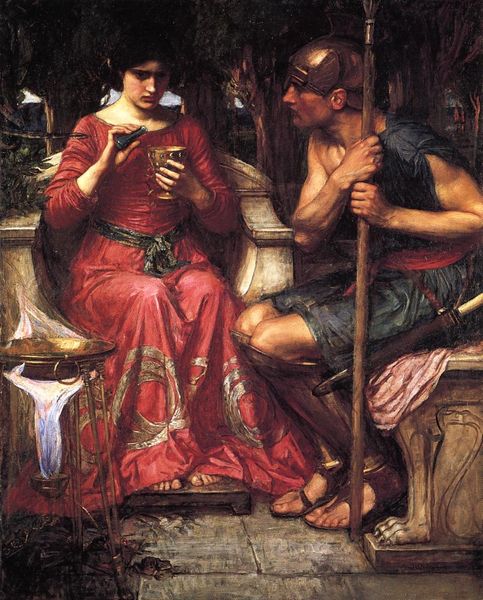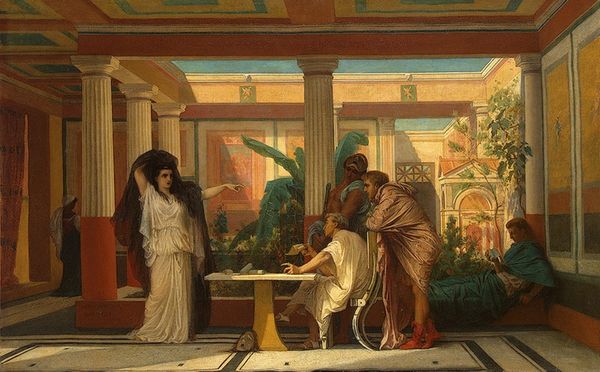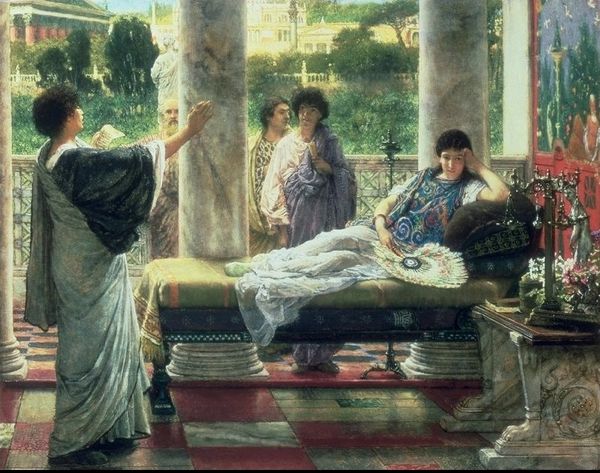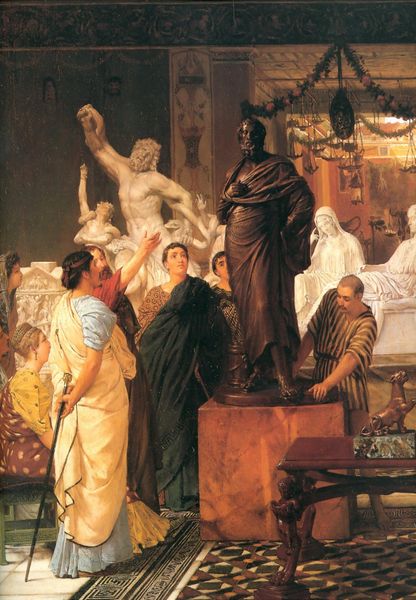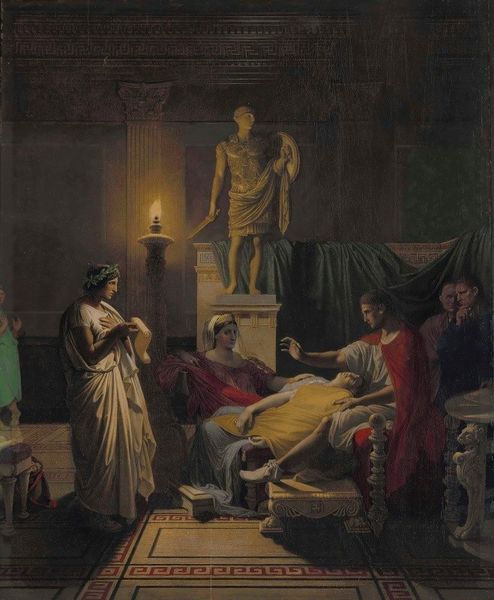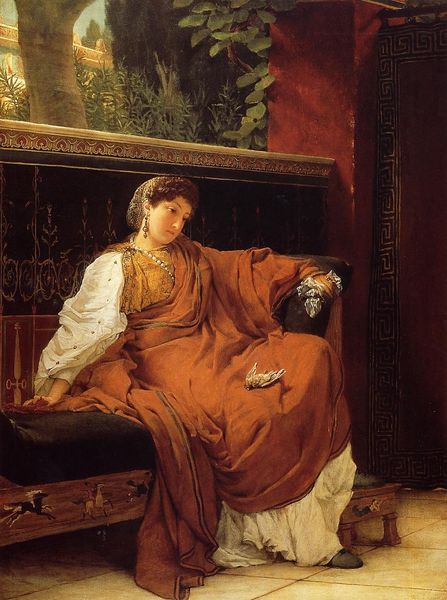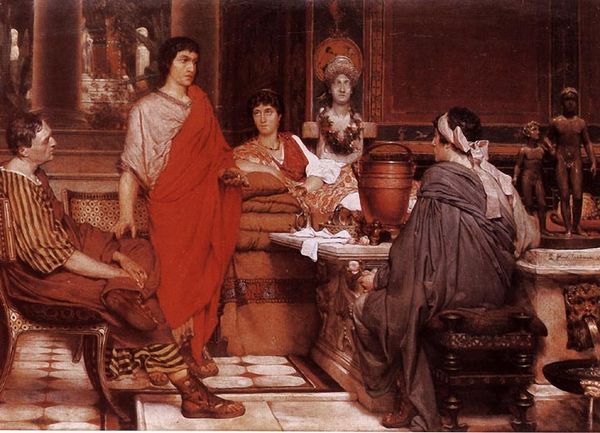
Vespasian Hearing from One of His Generals of the Taking of Jerusalem by Titus (The Dispatch)
0:00
0:00
lawrencealmatadema
Private Collection
painting, oil-paint
#
portrait
#
narrative-art
#
painting
#
oil-paint
#
oil painting
#
classicism
#
ancient-mediterranean
#
history-painting
#
academic-art
Dimensions: 51 x 38 cm
Copyright: Public domain
Editor: This is Lawrence Alma-Tadema’s "Vespasian Hearing from One of His Generals of the Taking of Jerusalem by Titus," an oil painting. The lighting is gorgeous, really highlighting the interior space. I’m immediately curious about the dynamic between these two figures. What can you tell me about what’s going on here? Curator: This piece speaks volumes about the construction of power, not just within the Roman Empire, but also within the Victorian era when it was painted. Alma-Tadema presents Vespasian, soon-to-be emperor, receiving news of a brutal military victory. Consider the implications: the destruction of Jerusalem, a pivotal moment in Roman expansion and Jewish diaspora, framed as a moment of personal triumph. How does that sit with you? Editor: It's... unsettling. It feels like a celebration, but at a terrible human cost. So, the painting's celebrating something awful. Curator: Precisely. And the ‘academic’ style reinforces this. Notice the meticulous detail, the luxurious setting? Alma-Tadema idealizes Roman power. He seems to omit all violence, and this sanitization is part of the painting’s broader ideological project. Think about Victorian society's fascination with classical antiquity, a way of legitimizing its own imperial ambitions through a romanticized past. Who, here, truly bears the weight of this “victory”? Editor: I hadn't considered that the style itself could be part of the message. I see what you mean now - it makes you complicit as the viewer. Curator: Exactly. Alma-Tadema is very aware of his contemporary viewers. What are some other ways to read it? Editor: So, beyond the Roman context, it’s also speaking to the politics of the time it was made. I’ll never look at ‘history painting’ the same way again! Curator: And hopefully it encourages you to consider art a participant in the very histories they seem to just represent. Art is not neutral!
Comments
No comments
Be the first to comment and join the conversation on the ultimate creative platform.
